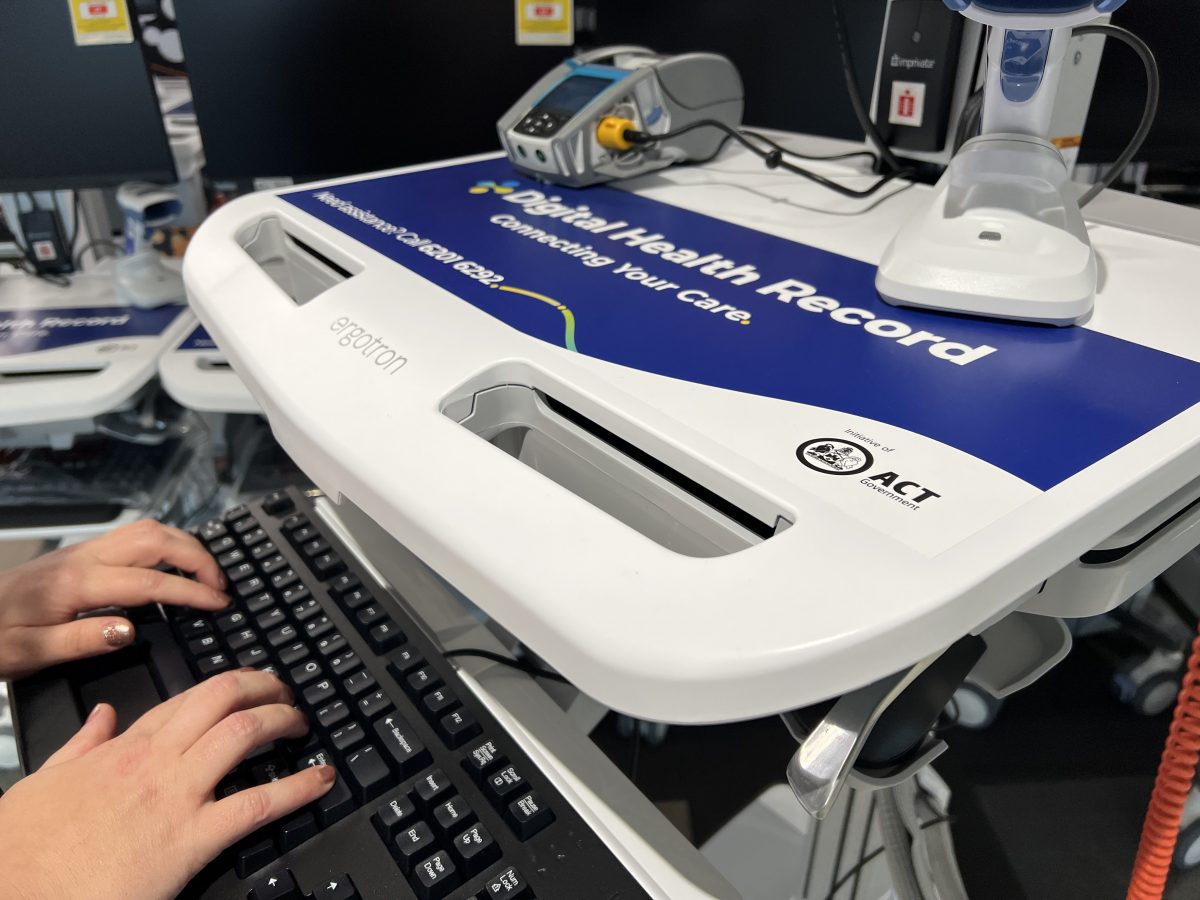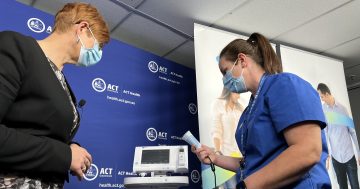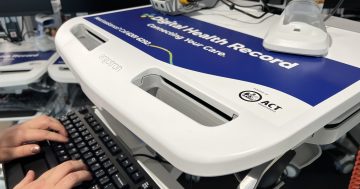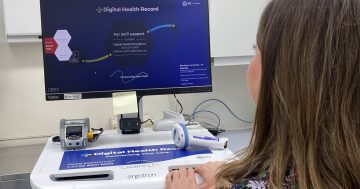
The rollout of the digital health record hasn’t exactly been smooth-sailing. Photo: Lottie Twyford.
Despite the transition taking more than a year, the Territory-wide Digital Health Record has gotten off to a somewhat bumpy start.
Some patients have reported having to deal with stressed staff members, while others received incorrect messages about appointments and test results which some believed to be a scam.
ACT Health on Monday (14 November) confirmed via social media some users had received a text message or email about test results being available but said it was due to an update.
“Users are advised this message is not a scam and was sent from the Digital Health Record,” the Facebook post read.
“Anyone who has received this message is advised you do not need to take any action.”
Other users have claimed they received emails or SMS notifications that contained incorrect information about upcoming appointments, some of which included the wrong name.
Patients have also complained about delays in receiving care or meal delivery and that staff are “stressed” out and repeatedly having to ask for help from “super users”.

Australian Nursing and Midwifery Federation ACT branch secretary Matthew Daniel warned about the extra pressure on health workers. Photo: Lottie Twyford.
Australian Nursing and Midwifery Federation (ANMF) ACT branch secretary Matthew Daniel said he has been warning the government for over a year this was not the right time to undertake such a major overhaul of the system.
He said the additional pressure the new system is putting on the healthcare workforce could risk patient care.
“We had concerns the government made the decision to roll out one of the most complex and wide-ranging IT systems across all of government in the midst of a pandemic when staffing is short and people are already stressed out,” he said.
“I raised that time and time again but it fell on deaf ears – they were more concerned with contractual arrangements.
“I’m a little concerned by the seemingly obvious issues which have arisen that I would not have expected.”
Mr Daniel has heard reports of both software and hardware issues, as well as a lack of support while nurses and midwives are trying to use it in a clinical setting.
“In some cases, hardware wasn’t made available to our members until 48 hours before the go-live, and in others, the software wasn’t set up to match the workflow of midwives and nurses in their areas,” he explained.
Mr Daniel said one tangible impact of the system has been an inability to record vital measurements of newborn babies on the new system.
He’s more concerned about the rollout at Calvary, where he said early signs had shown it was likely to be more complicated.
“That’s even down to things like wifi coverage in the emergency department which I was told was going to be an issue but was only identified months ago,” he told Region.
“From an IT project management consideration, you’d expect those things to be done well.”
Staffing issues have also exacerbated the transition, with the 1600 or so “super-users” being unavailable to support other staff as they were preoccupied with patient demand.
The Digital Health Record officially went live on Saturday (12 November) at 5:30 am.
The system will collate existing and future paper and digital health records across more than 40 different systems in one place.
Unlike the Federal My Health Record app, patients don’t get to opt out, and authorities have stressed the system will not keep any new records or details, it’s just a case of moving what they already record into one digital system.
ACT Health had anticipated the rollout to be somewhat challenging as almost 15,000 staff required training in the new system.
But it was touted as ultimately making life easier for staff and patients because data from previous appointments, tests and scans would be able to be found more easily, thereby saving everyone time.
ACT Health was contacted for further comment.




















